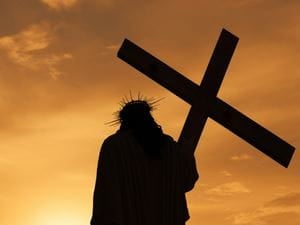
Many people think about the less-considered facts about Jesus’ life. They think about His looks, the clothes He wore, what food He ate, and how tall He was. These questions are natural as we consider the humanity of Jesus and how He died.
One question that often arises because we want to know the value compared to our lives is how old Jesus was when He died. Was He old or young, in the prime of His life? Did age and the cares of long life cripple Him? These questions help us identify with Jesus in some way. As we consider our mortality, His humanity cries out from death’s door. In these moments, we should remember the resurrection because it belongs to us. According to scholars, Jesus was 33 years old at His crucifixion.
How can we establish His age?
There aren’t any specific verses that say Jesus’ age when He died. However, some verses convey how old He was when he accomplished particular things and the cultural expectations of His community regarding milestones in one’s life.
The key moments to look out for relating to Jesus’ death are when He started His ministry and how long it lasted until He died. Before that, we need to know when He was born, estimated at four to zero B.C. Luke 3:23 tells us that Jesus was close to 30 years old when His ministry started, around 26 to 30 A.D. Jesus was in ministry for nearly three years, putting Jesus’ death at 29-33 A.D. Other significant milestones in Jesus’ life include His circumcision, Bar-Mitzvah, temple redemption, and reaching majority age, 20 years old.
Milestones of Jesus’ life.
In Hebrews 4:15, we read something about Jesus that we should consider when determining His age: He was without sin. By definition of his Jewish upbringing, He was perfect according to the Law of Moses. If He was perfect, it means He satisfactorily met the expectations of the community life governed by the Law, meaning we can track some of His milestones and create a loose timeline for His life.
In Luke 2:21, we read about Jesus’ circumcision at eight days old. In Mosaic Law, this practice was required for all males. Circumcision serves as the mark of God’s covenant with Abraham, a sign of the promise and the introduction of a male child into the Jewish faith. Without circumcision, a boy can’t join his faith community.
In the following verse, we learn about Jesus’ temple presentation, a ritual done 40 days after birth for the purification ceremony. This ritual had numerous purposes. The ceremony declared the child, in this case, Jesus, to be pure after coming in contact with his mother’s blood during childbirth. This ritual also acknowledged as ritually clean after the impurities created during delivery. Because Jesus was a firstborn male, the temple presentation also served as a redemption ceremony. His family purchased redemption via the sacrifice of the firstborn male because all firstborn male babies are owed to the temple.
When Jesus started teaching in the temple at 12 years old, as described in Luke 2:41-51, it was one year before His Bar Mitzvah. When Jesus was still regarded as a child, and his father was responsible for His ethical actions, Jesus stood with the teachers in the temple and taught them. This concept is important because it conveys that before society considered Him responsible for Himself and before He could join the practices of faith, Jesus had wisdom beyond the most taught of the Jewish faith.
Another moment in Jesus’ life wasn’t related to His moral or religious upbringing. In Matthew, we learn more information necessary to determine particular age facts on Jesus’ timeline. Specifically, in Matthew 2:16, Herod figured out the Magi lied to him before leaving on their journey, so he sent soldiers to kill any child two years old or under. This tidbit shows that Jesus was around two years old when the Magi worshipped Him. We can also assume that Jesus’ family stayed in Bethlehem for two years after His birth. Jesus was born in a stable, but we could assume His family moved into another home.
How old was Jesus when His ministry started?
Jesus would’ve started ministry when he was 30 years old, which we specifically learn in Luke 3:23. For him to teach in the temple region of Jerusalem, he would’ve needed a pedigree allowing it. In Luke 1:5, we learn that Jesus’ mother, Mary, was a cousin to Elizabeth, Aaron’s daughter. This relation gives Jesus ancestorial credentials to perform the teaching role He held when He visited the temple. As far as age, Number 4:3 gives the outlines to the Jewish priesthood for when a man can start his ministry, which was at 30 years old.
Luke denotes Jesus’ entry into ministry with several events. In Luke, Jesus was baptized, practicing, tempted, and taught in the synagogue. The importance of these milestones and events arises on differing levels. First, it showed Jesus’ lineage through King David to claim royal authority and through Aaron to claim the high priestly position. It provides the spiritual reason for the issues between Jesus and His day’s spiritual and temporal powers. The second and most relevant for this topic is it offered an age for Jesus when He started His ministry. From that point, we know that Jesus was in ministry for about three years, placing Him at around 33 years old when He died on the cross.
This information also gives us what we need to relate Jesus’ age to our own, and we can compare Him to His society to see if He represented the norm. Numerous sources say that the average lifespan in Jesus’ time was 35 years old, making Jesus seem older when He died. However, according to JP Griffin for the Journal of the Royal Society of Medicine, when we take away the significant weight of infant mortality, we can see that among people who lived to 5 years old, they had a life expectancy of 56 years old.
We don’t have the exact date of Jesus’ birth and the year He started His ministry, but we can determine that Jesus was between 33 and 39 years old at His death. The main takeaway from examining Jesus’ age when He died is that He died. Jesus’ age is relevant because He wasn’t a child and could make decisions for Himself while on Earth. He wasn’t coerced, and His death came because it was His choice. It was the price He was willing to pay for our salvation.

